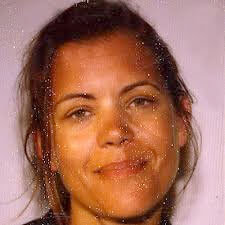Laurence Leblanc was born in Paris in the early days of June 1967. Starting her artistic training early on, she studied drawing, painting, and gravure as a child at the Musée du Louvre’s Ecole des arts décoratifs. Later on Leblanc studied visual art at the Academie Charpentier, at its historic La Grande Chaumiere workshop located in Paris.
"Each of us has to tell something that nobody else can tell"
-- Wim Wenders.
Leblanc always had a deep desire to convey her world a little differently and it was in that spirit that she covered Peter Gabriel’s Secret World Tour in the 90’s, travelling large parts of the world with the British musican over the next two years.
In 1999, Leblanc came to the attention of art critic and curator Régis Durand who described her work as : « It exists in these pictures a kind of familiar fantastic, a mix of ordinary poetry and some strangeness »
Whatever the medium, the act of creation for Laurence Leblanc comes after gradual impregnation with the subject and his or her environment. The results are often carefully thought-out and reflect both the expansive and minute of the subject and, their context.
Cambodian filmmaker Rithy Panh said of Leblanc that: « Her pictures look like souls… the fuzzyness is not fuzzy, the grainy asppearance is not grain, life is not exactly life. Yet it is not death either, and I like being led on this narrow territory between the two »
Leblanc is the winner of awards such as the Villa Médicis Hors–Les–Murs scholarship in 2000, and the HSBC Fondation prize in photographie in 2003. In 2003, Peter Gabriel wrote in the preface of her first book Rithy, Chéa, Kim Sour et les autres "Laurence has continued to explore new areas in her work, and I have watched her develop into an extraordinary artist"
Leblanc’s second book Seul l’air was published in 2009 by Actes Sud. At the same time her exhibition Seul l’air consisting of work from Africa was presented at the 40th International Photography Festival in Arles.
Always expanding her range of learning and creating, Leblanc responded to radio producer and writer Frank Smith’s proposition to create a sound piece for the Atelier de Création Radiophonique. The final 53 minute sound piece was broadcast on France Culture in July 2008. Leblanc also collaborated on the « Sometimes I think Sometimes I don’t think » project with the Domaine de Chamarande.
Bulles de silence, a 19 minutes film, written, produced and directed by Leblanc, was selected and premiered at the Museum’s Night in the Niepce’s Museum in May 2015.
Laurence Leblanc silently follows her own solitary artistic path which leads her to the field of contemporary photographic creativity, yet her strongest ally is time, the time given (and taken by the artist) to observe and to mature.
Represented by the Claude Samuel gallery in 1999 then by the VU’ gallery from 2001 to 2015 Leblanc is a regular at: Art Paris, Art genève, and at Paris Photo since her début there in 1998.
Leblanc’s works can be found in collections ranging from the prestigious National Trust for Contemporary Art in France, the Niépce Museum in Chalon-sur Saône, the French National Library, the HSBC Fondation & Collection, as well as in various private collections includng that of Marin Karmitz. We can see one of her picture in the exhibition « Etranger résident » Marin Karmitz’s collection from 15 october 2017 to 21 january 2018 in la maison rouge – fondation Antoine de Galbert.
Source: laurenceleblanc.com
